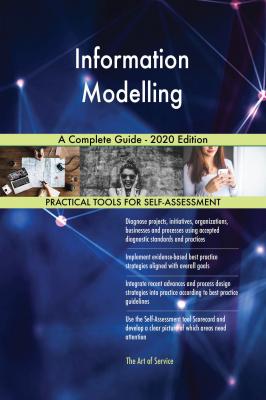Information Modelling A Complete Guide - 2020 Edition. Gerardus Blokdyk
Читать онлайн.| Название | Information Modelling A Complete Guide - 2020 Edition |
|---|---|
| Автор произведения | Gerardus Blokdyk |
| Жанр | Зарубежная деловая литература |
| Серия | |
| Издательство | Зарубежная деловая литература |
| Год выпуска | 0 |
| isbn | 9781867460060 |
9. Has a team charter been developed and communicated?
<--- Score
10. Is the work to date meeting requirements?
<--- Score
11. Who defines (or who defined) the rules and roles?
<--- Score
12. What is the worst case scenario?
<--- Score
13. How are consistent Information Modelling definitions important?
<--- Score
14. What Information Modelling requirements should be gathered?
<--- Score
15. What information should you gather?
<--- Score
16. Has your scope been defined?
<--- Score
17. Is special Information Modelling user knowledge required?
<--- Score
18. Is the improvement team aware of the different versions of a process: what they think it is vs. what it actually is vs. what it should be vs. what it could be?
<--- Score
19. Are task requirements clearly defined?
<--- Score
20. What system do you use for gathering Information Modelling information?
<--- Score
21. What scope do you want your strategy to cover?
<--- Score
22. How do you gather Information Modelling requirements?
<--- Score
23. What sources do you use to gather information for a Information Modelling study?
<--- Score
24. When is/was the Information Modelling start date?
<--- Score
25. Is the current ‘as is’ process being followed? If not, what are the discrepancies?
<--- Score
26. Has/have the customer(s) been identified?
<--- Score
27. What are the rough order estimates on cost savings/opportunities that Information Modelling brings?
<--- Score
28. Has a project plan, Gantt chart, or similar been developed/completed?
<--- Score
29. Has a high-level ‘as is’ process map been completed, verified and validated?
<--- Score
30. What was the context?
<--- Score
31. Are there any constraints known that bear on the ability to perform Information Modelling work? How is the team addressing them?
<--- Score
32. Are all requirements met?
<--- Score
33. The political context: who holds power?
<--- Score
34. Is Information Modelling linked to key stakeholder goals and objectives?
<--- Score
35. What baselines are required to be defined and managed?
<--- Score
36. Has the direction changed at all during the course of Information Modelling? If so, when did it change and why?
<--- Score
37. Have specific policy objectives been defined?
<--- Score
38. What are the Information Modelling use cases?
<--- Score
39. Is the scope of Information Modelling defined?
<--- Score
40. How does the Information Modelling manager ensure against scope creep?
<--- Score
41. How have you defined all Information Modelling requirements first?
<--- Score
42. Are resources adequate for the scope?
<--- Score
43. What is the definition of Information Modelling excellence?
<--- Score
44. What are the requirements for audit information?
<--- Score
45. Are roles and responsibilities formally defined?
<--- Score
46. How do you hand over Information Modelling context?
<--- Score
47. What scope to assess?
<--- Score
48. Why are you doing Information Modelling and what is the scope?
<--- Score
49. What are (control) requirements for Information Modelling Information?
<--- Score
50. How and when will the baselines be defined?
<--- Score
51. Are there different segments of customers?
<--- Score
52. How often are the team meetings?
<--- Score
53. What specifically is the problem? Where does it occur? When does it occur? What is its extent?
<--- Score
54. How do you keep key subject matter experts in the loop?
<--- Score
55. Has anyone else (internal or external to the group) attempted to solve this problem or a similar one before? If so, what knowledge can be leveraged from these previous efforts?
<--- Score
56. Does the team have regular meetings?
<--- Score
57. What would be the goal or target for a Information Modelling’s improvement team?
<--- Score
58. What defines best in class?
<--- Score
59. What constraints exist that might impact the team?
<--- Score
60. Who is gathering information?
<--- Score
61. How would you define Information Modelling leadership?
<--- Score
62. Has the improvement team collected the ‘voice of the customer’ (obtained feedback – qualitative and quantitative)?
<--- Score
63. How did the Information Modelling manager receive input to the development of a Information Modelling improvement plan and the estimated completion dates/times of each activity?
<--- Score
64. What sort of initial information to gather?
<--- Score
65. How was the ‘as is’ process map developed, reviewed, verified and validated?
<---
